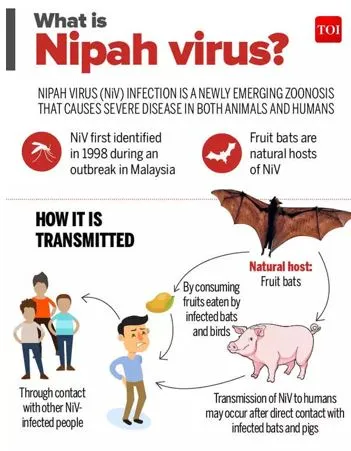

3rd June 2024 (12 Topics)
Context
Scientists at the Institute of Advanced Virology (IAV) developed a safe and effective way to generate non-infectious Nipah virus-like particles (VLPs) in the laboratory.
Key-highlights of the research:
- This breakthrough provides a safer platform for research and development of treatments against the deadly Nipah virus (NiV) in a BSL-2 laboratory.
- It brings researchers closer to developing monoclonal antibodies and antivirals against NiV and similar pathogens.
- Characteristics of VLPs:
- VLPs closely resemble viruses but are non-infectious as they contain no viral genetic material.
- They carry most of the virus's characteristics, making them valuable tools for studying viral binding, entry kinetics, and immune responses.
- HiBiT-Tagged NiV-VLPs:
- Scientists created "HiBiT-tagged" Nipah virus-like particles (NiV-VLPs) using plasmid-based expression systems.
- These VLPs are identical to the native virus but cannot replicate.
- The inclusion of a highly sensitive HiBiT tag accelerates their potential in antiviral drug screening and vaccine development.
- HiBiT-tagged VLPs offer reduced risks compared to using native viruses in research assays.
- This method is applicable to other virulent pathogens and is advantageous for studying BSL-3/BSL-4 level viruses in lower bio-containment levels.
Fact Box: About Nipah Virus
|
More Articles




